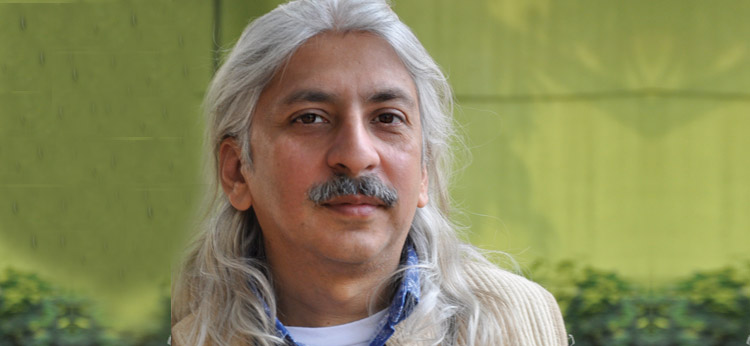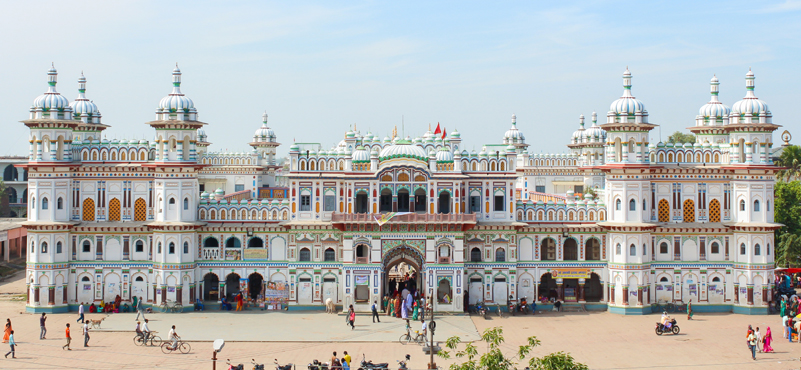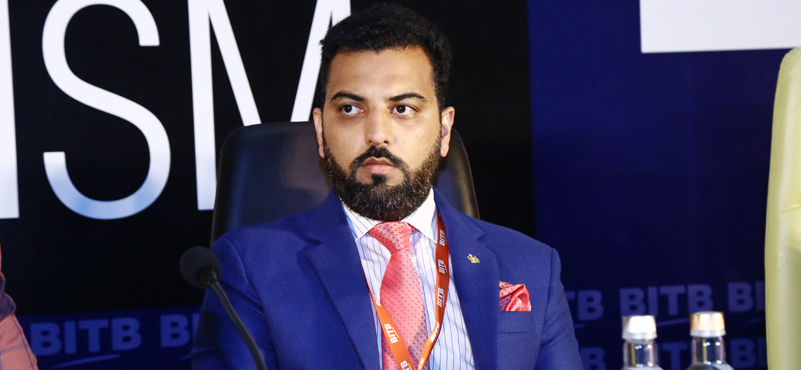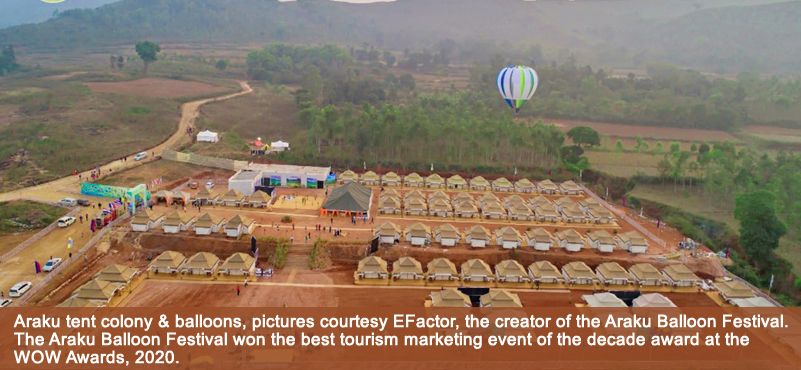Literary festivals are becoming more than just a pursuit for brainstorming and displaying literary genius. An event – which lends a new aspect to a city’s profile – it is also acting as a catalyst for tourism and, more so, as the first introduction to India as a destination for many. We speak with Sonjoy Roy who has transformed the Jaipur Literary festival into one of the biggest events across the globe, and, in his own words, now, a stage where culture marries heritage.
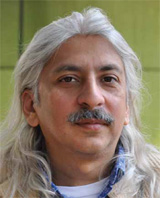
FOUNDER & MD , TEAMWORK ARTS
JLF commenced as a part of Jaipur Virasat Festival – as a literature segment to a much bigger gathering – has, through the years, transformed into a literary festival of such magnitude and stature that it is now giving a run for money to the most established literary gatherings around the world. “Contrary to the Harvard Business Report, we never thought that it will grow into such an enormous name. We started off in 2006, with some 100 odd authors and an audience of over 7,000 in attendance,” shared Sonjoy Roy, the man behind this thriving undertaking.
What started as an attempt to create something different and add a new, and probably unique, dimension to the city’s offerings, just kept growing beyond everyone’s wildest expectations. “We got a lot of ‘word of mouth’ publicity from authors who came for the first edition,” said Sonjoy. Everybody who participated, and those who attended as visitors, went back as our ambassadors bringing more people the next time around, we were told. “We were lucky and fortunate,” he added with a hint of modesty.
However, interestingly, he contended the idea of calling it merely an ensemble of intellectuals, brainstorming policy and general sense of direction in which the society was heading. He called it ‘The Great Indian wedding’. Arguing that JLF was a distinct festival, he noted that: “It has a character to it, unlike any other festival. The most reputed festival – Edinburg Literary Festival – hosts as many guests that can be easily accommodated in one of our lawns! That is how grand it is,” he substantiated. Besides books and literary genius, on display is retail furniture, locally crafted jewellery, clothing and ancillary products – all of which are adding more to the value of the festival, besides creating additional employment opportunity for local weavers, women and artisans.
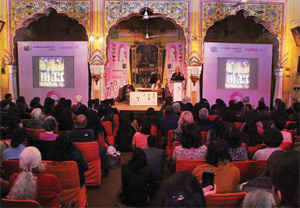 Giving us a peek into how the festival was organized; a barrage of visitors – foreign and domestic writers –accommodated and their travel itinerary managed, he shared that JLF held some 4,000 hotel rooms during the event. “We have deputed an agency that looks into ensuring accommodation and travel tickets for visiting participants by handling our inventory,” he explained. Further divulging that all expense was borne by the festival management committee and a not a penny was taken from participants, he shared that it helped them maintain a sense of freedom and a non-discriminatory approach. “There are a lot of festivals that get recommendations and ‘requests’ from various quarters to ‘accommodate’ writers, but we simply do not do it,” he proudly added. To shortlist writers for the gathering, a tentative list is put together by the members of JLF. “We are already planning for 2017. We are also supplemented by writers who keep us updated with latest work in their respective country. It helps to keep having fresh faces every time we come together,” shared Sonjoy.
Giving us a peek into how the festival was organized; a barrage of visitors – foreign and domestic writers –accommodated and their travel itinerary managed, he shared that JLF held some 4,000 hotel rooms during the event. “We have deputed an agency that looks into ensuring accommodation and travel tickets for visiting participants by handling our inventory,” he explained. Further divulging that all expense was borne by the festival management committee and a not a penny was taken from participants, he shared that it helped them maintain a sense of freedom and a non-discriminatory approach. “There are a lot of festivals that get recommendations and ‘requests’ from various quarters to ‘accommodate’ writers, but we simply do not do it,” he proudly added. To shortlist writers for the gathering, a tentative list is put together by the members of JLF. “We are already planning for 2017. We are also supplemented by writers who keep us updated with latest work in their respective country. It helps to keep having fresh faces every time we come together,” shared Sonjoy.
On the question of whether JLF could further the cause of regional literature in India, we were told that almost 40 percent of total participation came from different states. “We are featuring 11 Indian languages this year. In fact, best Indian writing comes from regional work,” said Sonjoy. Adding that succinct translation remained an issue, JLF had roped in translators to address this lacuna. “We will showcase 20-25 of the best work, and these will be showcased at our mart,” he told us.
Acting as a first introduction to India; repeat guests bringing family and friends
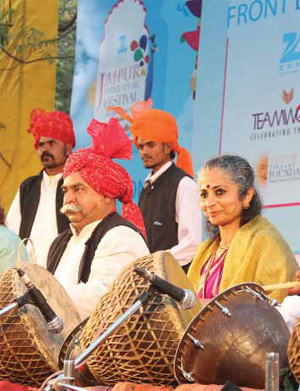 In terms of sheer impact on tourism and footfalls in the state, JLF has scored on all counts. In an in-house survey, conducted 4-5 years ago, the state registered an additional income of 18-20 crores. In terms of footfalls, over 2,70,000 visitors attended the event in 2015 edition that spanned for five days. 11 percent of total influx was from abroad, out of which 33 percent came from the USA while 27 percent descended from British shores. Canada, Hong Kong and Singapore, too, saw participation, we were informed.
In terms of sheer impact on tourism and footfalls in the state, JLF has scored on all counts. In an in-house survey, conducted 4-5 years ago, the state registered an additional income of 18-20 crores. In terms of footfalls, over 2,70,000 visitors attended the event in 2015 edition that spanned for five days. 11 percent of total influx was from abroad, out of which 33 percent came from the USA while 27 percent descended from British shores. Canada, Hong Kong and Singapore, too, saw participation, we were informed.
But, what has been significant is the rebound effect. “There are a number of writers who come back with their families and friends. They either come a few days prior to the event, or leave for other parts of the country, after we wrap up,” said Sonjoy, indicating how events like these have an enormous impact on bolstering tourism.
“I have, personally, advised many visitors on sightseeing in Kerala, Goa and other destinations of repute. So, it is not just about boosting Rajasthan or Jaipur’s economy, it has implications on a national level,” he explained.
Besides creating a unique product to further Jaipur’s reputation beyond a land of mighty castles, JLF must also be congratulated for creating a model that has been emulated not only in different parts of the country, in form of Kochi and Kasauli Literary Festival to name a few, but, also, globally. “A lot of organizers come to us to study our model, understand our method of R&D, and we are happy to help. It is flattering to know that people are copying you,” he said.
Indeed, if a successful JLF can add so much more luster to Jaipur’s offerings, besides creating additional exposure to India as a destination, it is only a wonderful development to see so many literary festivals popping up at distant corners of this vast country. However, its success is not just about bringing big names of the literary world under one roof, but positioning a destination as a centre for cultural exchange, with ample for the locals to gain from. The success of other such endeavours will depend on whether or not they are able to take a leaf out of JLF’s book on this one.
Develop tourist spots where culture meets heritage; turn them into centre of economic activities
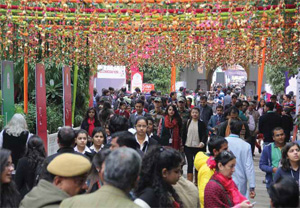 Beyond the realm of promoting a literary festival and consequential upliftment of Jaipur’s profile as a city that attracts the best and brightest to argue pertinent issues of the day, he has been able to smartly merge it with heritage preservation by hosting events at places with historical and tourist importance. “The minute you marry culture and heritage enabling an economic incentive for restoring heritage property, you have a win-win situation,” he reasoned. That is our USP, and if we are able to sell it well, there is no stopping us,” he added.
Beyond the realm of promoting a literary festival and consequential upliftment of Jaipur’s profile as a city that attracts the best and brightest to argue pertinent issues of the day, he has been able to smartly merge it with heritage preservation by hosting events at places with historical and tourist importance. “The minute you marry culture and heritage enabling an economic incentive for restoring heritage property, you have a win-win situation,” he reasoned. That is our USP, and if we are able to sell it well, there is no stopping us,” he added.
Calling Neemrana Hotels an apt example that had demonstrated the transformative power of heritage in becoming a pivot to tourism and footfalls, he noted that people increasingly yearned to go beyond the tumult of malls and Friday night parties seeking experiences. “Everyone wants a different and a unique experience. You have to give the discerning tourist something extra,” he noted. “Heritage, and its enormity in the context of tourism, is yet to be understood completely in India, leave apart utilizing it,” he added. He quoted the success story of Khajuraho – a town most famous for rock carvings depicting Vatsayayana’s Kamasutra – and how a sleepy hamlet gained international prominence. “It would not have happened unless quality accommodation was created. Unless you create infrastructure and stop looking everything from the prism of ‘business is bad for heritage’, nothing will ever happen,” asserted Roy. “Of course, you have to be smart about it, and develop facilities in a sustainable and an organic way, but someone has to do it,” he added.
Referring to the thoughtful management of heritage and bygone era relics in Western countries, he pointed towards an array of activities and engagements designed to keep the tourist spellbound, and how it amplified the impact by creating an experience. They can sell three bygone era bricks as something magnificent, he quipped. “Compared to India, Western countries have very little in the name of heritage. But, they have achieved so much more in terms of footfalls and economic gains. You have audio-visuals, 3D tours, and ample shopping experience which accentuates the look and feel of the whole thing,” explained Roy.
It is noteworthy that Broadway shows adds some 11.3 Billion USD, annually, to New York’s kitty, we were told. “How we can create something as iconic that makes so much business sense is a challenge, and the answer lies in creating value and entertainment for the travellers. Innovation is the key,” he asserted.

